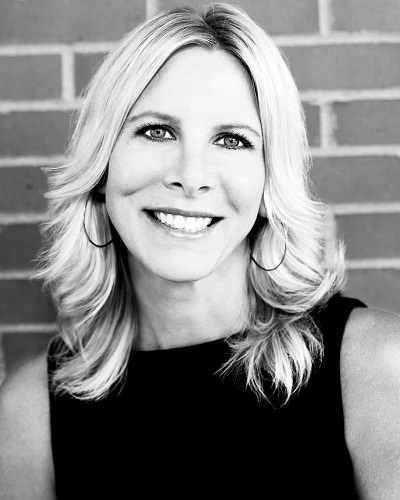
The role of Chief Marketing Officer, or any senior marketing position, is always a challenging one – and never more so than in the first 90 days. Whether you are a CMO or, as I have been, one of their trusted advisors, you know that preparing for and working through this initial stage is critical.
We’re sharing some of these hard-won lessons from years of experience here. Throughout this month’s column, you’ll even find comments and insights from one B2B CMO who’s just run this particular gauntlet (and come out smiling): Deanna Heuschel, head of marketing for North American Corporation, a leader in helping Fortune 1,000 brands manage their marketing operations and a national distributor of products in the packaging and commercial goods industries.
8 steps to help you survive — and thrive
While everyone’s situation and experience are different, there are common basic steps that help ensure sufficiently rapid, reliable progress as a new marketing leader. As you’ll see, a few of these steps must be taken before you even begin your new position:
1. Educate yourself broadly – and keep learning
2. Set realistic expectations during the interview process
3. Come in with a long-term plan, but be agile about short-term needs
4. Socialize yourself before you socialize your ideas
5. Educate your organization
6. Set the pace, but don’t race
7. Lock in and leverage an early win
8. Persevere

Educate yourself broadly – and keep learning
Now, more than ever, marketers must be renaissance women and men, and none more so than the CMO (a term which might as well mean “Chief Multi-channel Officer”). Hopefully, your formal education has encompassed, or can still encompass, much more than traditional marcom: brand and business strategy, corporate culture building, and math, math, math (see our B2B CMO column with Paul Hillen for more on that). And an advanced degree is a virtual prerequisite.
But your ongoing education, throughout your career and on your own time, may be even more important. Heuschel recounted how a wide range of early career experiences – including non-marketing roles in TV news and public relations – left her better prepared to meet the demands of the multi-faceted CMO role she recently took on. And she added that marketers need to be willing to self-educate, to meet new challenges and opportunities. Speaking of a previous job, when ecommerce was a new phenomenon, she tells how “my director, my department, the whole staff bought books and taught ourselves” how to go to market in this new marketing environment.
Set realistic expectations in the interview process
In the end, CEOs are often dissatisfied with CMO performance because their expectations were never clearly defined, realistic, or aligned with what marketing can deliver. The time to start setting expectations is during the interview process – and the person do to it is you, the prospective marketing leader.
As the new marketing leader, you’re going to need to set strategy, and have the time to collect the necessary insights and information to do so. But top management is, of course, going to be looking for measureable, move-the-growth-needle results – right now.
Here’s how Heuschel experienced, and managed, this inevitable dilemma in her recent transition: “The goals that were shared during the interview process were specific, such as advancing the digital experience for customers. However, once it came down to actually putting goals on paper, it became metric-focused, which makes sense if there’s a foundation, resources, content, etc. It was up to me to set realistic expectations around ‘what I can accomplish for the organization in year one, and then activate and leverage as a foundation in year two and beyond.’ It was really a work-in-progress and a joint effort.”
Come in with a long-term plan, but be agile about short-term needs
Of course, even with long- and short-term expectations set and agreed upon, business is still an unpredictable beast that can chew up the best laid plans.
You will, of course, want to draw on your previous experiences, what you know works, and walk in the door with a plan and process in mind. But you’ll be wise to walk in wearing CrossFit training shoes because, no matter how much you prepare, you’re going to have to learn fast on your feet.
“I had a plan in mind,” says Heuschel of her arrival at North American. “I just didn’t yet really understand the need. There were so many needs, it was like I was trying to be responsive on a variety of tactical marketing requests, while developing basic department processes and accessing talent and resources, in addition to significant needle moving initiatives to support business development growth. There were three divisions and the overall corporation to focus on and figure out quickly.
The idea that I would take the time to learn the business is still ongoing, and I’m still persevering in that area. I’m conducting research, managing an agency review, going on ride-alongs, seeking to understand the organization from the inside out, so I can then activate a strategy aligned with the budget that will help build a strong foundation for this organization.
I am moving down that path; it may take three more months than I was hoping, but we’re moving in that direction. Along the way, you still have to be responsive to the needs of the organization and when those are urgent pretty consistently, you have to be able to activate rapidly.”
Socialize yourself before you socialize your ideas
There is a temptation, particularly when you’re hired to jump in and fix marketing, to simply forge ahead on your own. Resist it. Instead, start building the relationships that will provide you organizational access, information, and even advocates. Heuschel says, “I did 40-plus meet and greets within my first three weeks.” And she didn’t limit herself to the office. “I think it is important to take people out to lunch to develop personal relationships, to get to know them outside of just the work we do together and build the bonds that build trust.”
We frequently hear CMOs emphasize the benefits of relationship-building, as when Amy Nigrelli of CUNA told us, “When you take the time to listen to someone else, hear what they’re all about and really listen to what it is that they’re trying to do – and to understand their passions – you can do a much better job of telling their story, and helping reach their objectives.”
In addition to trust, these interpersonal relationships, particularly when built across functions, can help you more quickly grasp both the current and historical corporate context. This can be invaluable when you have to overcome the inertia expressed in “Oh, this is the way we’ve done it for 20 years.” Once you become part of the “we,” the way “we do things” is more likely to change.
Educate your organization
Building relationships isn’t all lunch – it’s also learning. In addition to the learning you’ll do while listening to the new colleagues you seek out, as the new CMO you also have an opportunity, even a responsibility, to teach.
Start at the top. Many B2B organizations are sales-centric and unfamiliar with – or unbelieving in – the benefits of branding and marketing. Take the time to sell in the scope of, and business case for, what you’re doing.
Set the pace, but don’t race
All of the above takes time, which, as noted before, is always going to seem in short supply as you work to accelerate your own progress and the organization’s growth. But just as you don’t want to simply jump in and start changing the world before you socialize yourself and your ideas, once you are in forward motion you don’t want to move so fast with the new that the old organization can’t keep up. Heuschel notes that, in her first months in the CMO seat, she’s “been mindful of the cadence of how [they] move forward, based on understanding where [they’re] going, and aligning resources accordingly.”
Lock in and leverage an early win
Of course, there’s nothing like success to convince your management and peers that you’re on the right track. And it doesn’t have to be a big success – it just needs to come early on.
“Those quick wins allow you to earn the respect and credibility that you’re going to need in this role, to get a seat at the table and to have a voice,” says Heuschel. “In my case, I was able to successfully execute a conference and trade show for our sellers, associates, and suppliers. That certainly elevated the experience for all, based on the survey results that we received from the suppliers and our sellers, as well as anecdotal comments. A win like that is good; it helps the company feel like it was a good decision to hire you.”
Persevere
All the advice shared so far falls neatly into the category of “easier said than done.” Maybe that’s why, when asked to sum up the most important qualities and qualifications for succeeding as a new CMO, Heuschel simply said, “It’s really about perseverance.”
These eight steps are surely not the only path to success as a new CMO – but experience has proven that they will serve you and your new organization well, both in the first 90 days and beyond.
Image source: Kristopher Roller